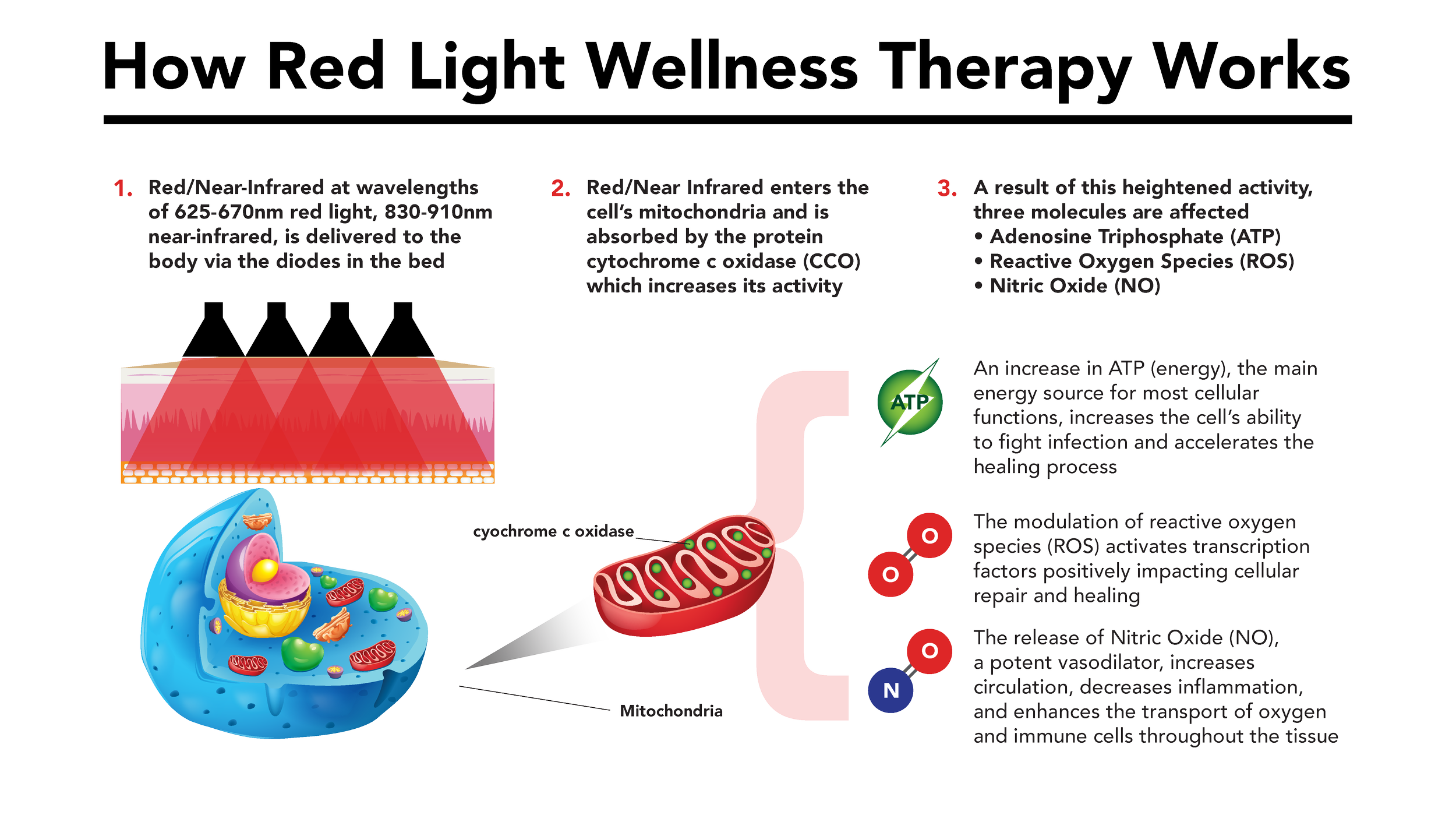The Science Behind Red Light Therapy Beds: Functionality and Effectiveness
Red light therapy is a non-invasive treatment that uses specific wavelengths of light to penetrate the skin and stimulate various biological processes. Commercial red light therapy beds are designed to simultaneously deliver this therapy to large areas of the body, making them an effective solution for wellness centers, chiropractors, med spas, dermatologists, gyms, and health centers. Let’s explore the underlying science of red light therapy beds, their mechanisms of action, and the benefits they provide.
Understanding Red Light Therapy
What is Red Light Therapy?
Red light therapy, also known as photobiomodulation or LLLT, involves the use of red and near-infrared light to promote healing, reduce inflammation, and enhance cellular function. This therapy leverages specific wavelengths, typically ranging from the 600s for red light and 800s for near-infrared in nanometers, which are absorbed by the skin and underlying tissues.
The Technology Behind Red Light Therapy Beds
Red light therapy beds are equipped with high-power LEDs that emit red and near-infrared light. These beds are designed to provide full-body coverage, ensuring that the therapeutic light reaches all areas of the body effectively. The LEDs used in these beds are calibrated to deliver the optimal wavelengths for therapeutic benefits.
The Science of Photobiomodulation
How Red Light Interacts with Cells
When red and near-infrared light penetrates the skin, it is absorbed by the mitochondria, the powerhouse of cells. This absorption increases the production of adenosine triphosphate (ATP), the energy currency of the cell. Enhanced ATP production leads to improved cellular function and accelerated healing processes.
Biological Effects of Red Light Therapy
Increased Circulation: Red light therapy stimulates blood flow, which helps deliver more oxygen and nutrients to the tissues, promoting faster healing.
Reduced Inflammation: The anti-inflammatory properties of red light help decrease swelling and pain, making it beneficial for conditions like arthritis and muscle injuries.
Enhanced Collagen Production: Red light stimulates collagen synthesis, which improves skin elasticity and reduces the appearance of wrinkles and scars.
Clinical Evidence and Studies
Numerous studies have demonstrated the efficacy of red light therapy in treating various conditions. Research has shown positive outcomes in areas such as wound healing, pain management, and skin rejuvenation. For example, a study published in the journal "Lasers in Surgery and Medicine" found that red light therapy significantly improved wound healing in patients with diabetic ulcers.
Mechanisms of Action
Light Penetration and Absorption
The depth of light penetration depends on the wavelength used. Red light (600-700 nm) penetrates the skin to a shallow depth, making it ideal for treating surface-level conditions such as skin health. Near-infrared light (800-900 nm), on the other hand, penetrates deeper into the tissues, reaching muscles, tendons, and even bones.
Cellular Stimulation and Healing
The absorbed light energy triggers various biochemical processes within the cells. By enhancing ATP production, red light therapy boosts cellular metabolism, promotes tissue repair, and reduces oxidative stress. These effects collectively contribute to faster healing and recovery.
Optimal Use of Red Light Therapy Beds
Recommended Distances and Exposure Times
Typical beds on the market take 15 - 30 minutes, but our Red Light Wellness equipment takes 8-12 minutes. The nice thing about whole-body beds is that you don't need to get your measuring stick out since the OEM has already done the work for you; you just lay down.
Factors Influencing Treatment Outcomes
Several factors can affect the efficacy of red light therapy, including the intensity of the light, proximity, treatment area, exposure, and the specific condition being treated. Ask us about your specific requirements and we can help optimize treatment outcomes.
Benefits of Red Light Therapy Beds
Comprehensive Full-Body Treatment
Red light therapy beds offer the advantage of treating large areas of the body simultaneously. This comprehensive coverage ensures that all targeted tissues receive the therapeutic benefits of red light.
Enhanced Effectiveness Compared to Handheld Devices
While handheld red light devices can be effective for localized treatment, whole-body therapy beds provide a more consistent and powerful exposure. This leads to better and faster results, especially for full-body treatments.
Practical Tips for Maximizing Therapy Benefits
Positioning and Proximity
To achieve the best results, position yourself at the recommended distance from the light source. Ensure that the light is evenly distributed across the body to avoid any underexposed areas.
Consistency and Adherence
Consistency is key to seeing benefits from red light therapy. Adhering to a regular treatment schedule and following the recommended guidelines will maximize the therapeutic effects.
Common Mistakes to Avoid
Incorrect Use
We want to expose as much skin to the light as possible, full nudity is best.
Inconsistent Use
Skipping sessions or not following a consistent schedule can lead to suboptimal results. Regular use is essential for achieving the desired outcomes.
Ignoring Device-Specific Instructions
Each red light therapy bed may have unique instructions for use. Reading and following these instructions is important to ensure safe and effective treatment.
Conclusion
Red light therapy beds are powerful tools for promoting health and wellness. You can maximize their benefits by understanding the science behind how these beds work and following best practices for use. Whether you're a wellness professional or an individual seeking effective treatment options, red light therapy beds offer a versatile and effective solution.






Explore how to choose the right red light therapy bed for your wellness center. Compare features, benefits, and maximize ROI with medical-grade devices.